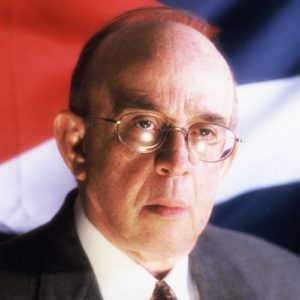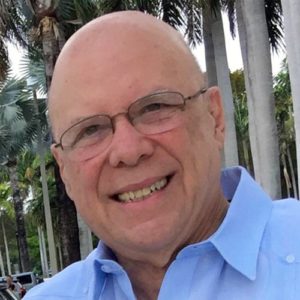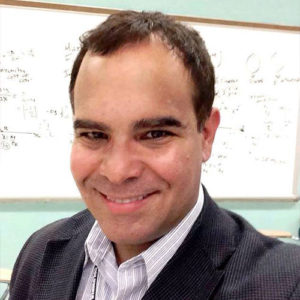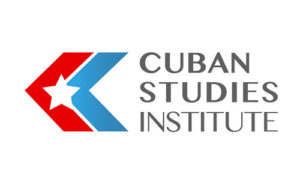Apparently highly favorable conditions accompanied Cuba’s emergence into independence on May 20, 1902. There were no major social or political problems similar to the ones other Latin American nations had experienced after their break with Spain. There was no large unassimilated Indian population and although blacks represented a significant proportion of the total populating there was no major racial conflicts, the two groups having learned to live together since colonial times. There was also no strong regionalism and no powerful church to challenge the authority of the state. Furthermore, the liberal-conservative feud that plagued countries like Mexico during the nineteenth century was nonexistent in Cuba.
The economic situation was also favorable. The infusion of foreign capital, the increasing trade with the United States, and high sugar prices augured a prosperous future. Cuba and the United States signed a Commercial Treaty of Reciprocity in 1903 which assured Cuban sugar entering the United States a 20 percent tariff preference. In return, Cuba granted certain American products preferential treatment. The treaty reinforced the close commercial relations between the two countries, but it also made Cuba further dependent on a one-crop economy and on one all-powerful market.
In spite of the apparently favorable conditions, however, Martí’s vision of a politically and economically independent nation failed to materialize in the post-independence years. Whether he would have been able to prevent the events that followed the War for Independence can only be conjectured. A process of centralization extended the great sugar estates of the colonial period, restraining the growth of a rural middle class and creating a landless agrarian proletariat of poor whites and blacks. Cuba became more and more commercially dependent on the United States, and the inclusion of the Platt Amendment into the Cuban Constitution of 1901 established United States supervision of political developments in Cuba.
Another problem was that Cuba had preserved the colonial Spanish attitude that public office was a source of personal profit. Electoral frauds became a standard practice. Politics became the means to social advancement, a contest between factions for the spoils of office. Personalismo was substituted for principle; allegiance to a man or a group was the only way to ensure survival in the political arena. The Spanish legacy of political and administrative malpractice increased in the new nation too suddenly to be checked by a people lacking experience in self-government. Although the United States’ dissolution of Cuba’s veteran army prevented a repetition of the typical nineteenth-century Spanish-American experience, where the army filled the political vacuum left by Spain, many veterans took an active part in politics, and their influence, sometimes not too beneficent, was felt in the years following the establishment of the Republic in 1902.
As successor to Spain as the overseer of the island’s affairs, the United States unwittingly perpetuated the Cubans’ lack of political responsibility. Cubans enjoyed the assurance that the United States would intervene to protect them from foreign entanglement or to solve their domestic difficulties, but the situation only encouraged their irresponsible and indolent attitude toward their own affairs and was not conducive to responsible self-government. In the early decades of the republic, the Cubans developed a “Platt Amendment mentality,” where they found it easy to rely upon the United States for guidance in their political decisions. “Tutelage,” wrote Cuban intellectual Jorge Mañach, “favored the growth of general civic indolence, a tepid indifference to national dangers.”
This civic indolence was not conducive to the growth of Cuban nationalism. Although the Cubans were enclosed in a geographic unit, shared a common language, religion, and background, they lacked national unity and purpose. The influence of the United States weakened the forces of nationalism, in the early part of the century.
As the century progressed, another force, “españolismo,” became an important factor in keeping the nationality divided. When Cuba became independent, Spaniards were guaranteed their property rights and were allowed to keep commerce and retail trade largely in their own hands. Immigration from Spain, furthermore, increased considerably and by 1934 there were an estimated 300,000 Spaniards in the island. This influx constantly strengthened Spanish traditions and customs. Many Spaniards themselves remained divided, retaining the ways of their own native provinces, hoping for an eventual return to Spain and thus failing to assimilate into the mainstream of Cuban society.
A dangerous tendency to solve differences through violence also permeated the political atmosphere. In 1906 President Estrada Palma called for U.S. intervention to offset the so-called Guerrita de Agosto. Organized by José Miguel Gómez and his liberal followers, this revolt aimed at preventing Estrada Palma’s reelection to a second term in office. The United States sent in marines to end the conflict, initiating a new intervention which lasted from 1906 until 1909.
This second intervention differed significantly from the first. The United States had not been eager to embark on a new period of rule in Cuba and the provisional governor, Charles E. Magoon, turned to dispensing government sinecures or botellas to pacify the various quarreling factions. Magoon also embarked on an extensive program of public works, gave Havana a new sewage system, and organized a modern army. These accomplishments, however, were partially overshadowed by extravagant spending, leaving a floating debt where there once had been a surplus. Magoon also drew up an organic body of law for the executive and the judiciary, and for provincial and municipal government. He also provided an electoral law, as well as laws for a civil service and for municipal taxation. Evidently, the U.S. government considered as one of the main purposes of the intervention the enactment of fair legislation that would prevent civil wars.
Having pacified the country and introduced this new legislative apparatus, the United States called for municipal and national elections. The Liberals won a solid majority and elected their leader, Jose Miguel Gomez, to the presidency (1909-1913). The United States seemed willing to allow the democratic process to follow its course, and on January 28, 1909, the interventionist forces were withdrawn from the island.
The impact of this second intervention was far reaching in other, less positive ways. It removed any pretense of Cuban independence, strengthened the Platt Amendment mentality, and increased doubts about the Cubans’ ability for self-government. Disillusionment took hold among many leaders, intellectuals, and writers, and this feeling was transmitted to the mass of the population. Cynicism and irresponsibility increased and so did the resort to violence to solve political differences.
*Jaime Suchlicki is Director of the Cuban Studies Institute, CSI, a non-profit research group in Coral Gables, FL. He is the author of Cuba: From Columbus to Castro & Beyond, now in its 5th edition; Mexico: From Montezuma to the Rise of the PAN, 2nd edition, and of Breve Historia de Cuba.









2 thoughts on “THE PLATT AMENDMENT REPUBLIC”
After 60 years living in the U.S. after my exile from Cuba, this is the first time I have knowledge of this CSI and the wonderful writings that I just read on the beginnings of Cuba’s supposed “self-government” after Spain. Although I had some knowledge of the U.S. influence during those years, I didn’t have the details until now. I am very happy about my discovery of this medium.
It is a very nicely written work, showing the weak support the Republic really had. One of the pillars holding the Republic in those first years, was the personal Influence of Don Tomas Estrada Palma. He tried to control the caudillos, and really fulfilled the promise to PAY them for their service with a 35 million dollars loan, to be repaid in 40 years.
It did not work, and without him, the Republic collapsed. But 60 years later, under similar conditions, the strong leader Fulgencio Batista was also holding on his shoulders the Republic, and no one care about what would happen later, as they did not in 1906, 1917, 1933…. The Revolution prevailed and the revolutionary mentality.
What ALL the Cubans should know and should be shown in schools, is the The Revolution, is a concept INCOMPATIBLE with the concept of the Republic, and you can not be both, only one, those concepts exclude the other.
Finally, since the revolutionaries were always present to bring down the Republic, the only solution seems to hang all of them or put them to the fire squad. But the real problem was that the EDUCATION system in Cuba, was PROMOTING the revolutionary mentality, and forming a new generation of violent young people.
It is a closed negative loop, since it is the government who controls the education system. The change will also require the choose NEW HEROES, and remove or downgrade the existing ones.
Comments are closed.